Halong Bay harbours natural phenomena, divine mythical legend, and a great historical value. Halong Bay history is not as famous as its beauty. However amazing wonder we have today is the result of million years of development. Get to know Halong Bay history, you will understand why it has been awarded many accolades, most prestigious being the UNESCO World Heritage Site.
Halong Bay Formation
The seascape that features jade green emerald waters and limestone towers is actually over 500 million years old. The bay is sculptured by tectonic movement, not volcanic activity as many have been mistaken.
Ha Long Bay today is the result of long-term geological evolution, influenced by many factors. The most remarkable events are the formation of the limestone layer more than 1,000m thick during the Carboniferous and Permian period (240 to 340 million years ago); and the development of the Halong depression during the Neogene period (10 to 26 million years ago). The erosion process forming the limestone plain was most active in the Quaternary Pleistocene epoch (11,000 to 2 million years ago). (Halongtourvietnam.org)
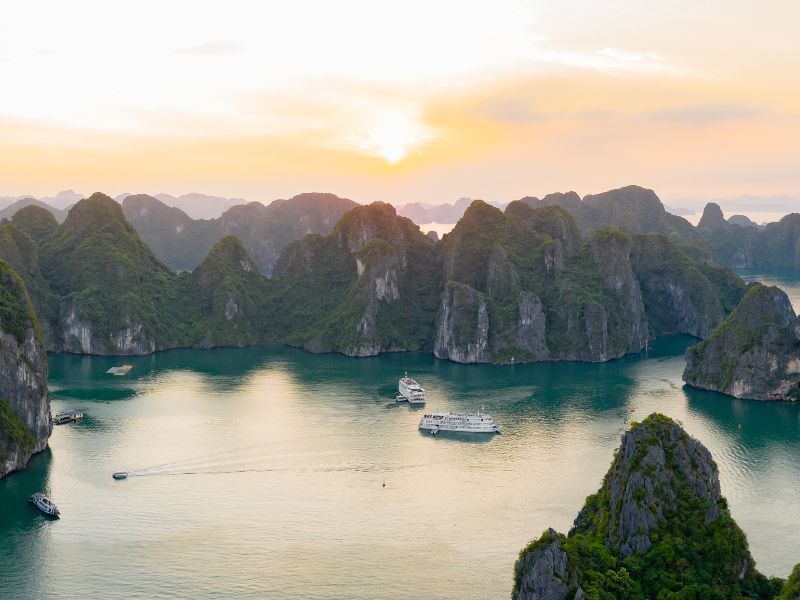
Halong historical development
Halong bay not only underwent 500 million years of geological development but witnessed a remarkable historical development as well.
Historical research surveys have shown the presence of prehistorical human beings in this area tens of thousands of years ago. Halong Bay also marked important events in the history of Vietnam with many artifacts found in Bai Thơ Mount, Dau Go Cave, and Bai Chay.
Soi Nhu culture (18,000–7000 BC)
Located in Halong and Bai Tu Long are archaeological sites such as Mê Cung and Thiên Long. There are remains from mounds of mountain shellfish (Cyclophorus), spring shellfish (Melania), some freshwater mollusk and some rudimentary labor tools. The main way of life of Soi Nhụ’s inhabitants included catching fish and shellfish, collecting fruits and digging for bulbs and roots. Their living environment was a coastal area, unlike other Vietnamese cultures, for example, like those found in Hoa Binh and Bac Son.
Cai Beo culture (7000–5000 BC)
Located in Halong and Cat Ba island, its inhabitants developed to the level of sea exploitation. They were the ancient fishermen and the fishing village which existed during this time was one of the largest ancient fishing villages ever discovered in Vietnam. The Cai Beo culture is a link between Soi Nhu culture and Halong culture.
Halong Culture (3000 – 1500 BC)
Halong Culture is one of 4 important prehistoric marine culture in Vietnam including Halong (Quảng Ninh), Hoa Lộc (Thanh Hoá), Bàu Chó (Quảng Bình), Xóm Cồn (Khánh Hoà).
There are about 50 Halong Culture relics which have been discovered on islands of Halong Bay. They all have a typical characteristic of making stone tools & pottery. The inhabitants in this period might have created water vehicles to exchange their tools and pottery product to other regions. The evidence is the axes with the typical characteristic of Halong culture which were found in northern Vietnam and even in China.
Feudal period
Halong Bay in the Feudal period played an important part in one of the most glorious pages in Vietnam history.
In the 12th century, a part of Halong was a busy commercial port which was one of the very first international commercial port of Vietnam. With topographic characteristics of mountains divided by the sea, calm water, the area became perfect for a harbor to exchange goods.
Hundreds of year ago, Halong was famous for its stunning seascapes and favorite places of the kings who reigned over the country in this time. In 1468, King Le Thanh Tong had a cruise here. Admiring the scenery, He composed a poem and had it carved in the stone mountain which today called Poem mount. Trinh Cuong Lord, in 1729 also visited the place and immediately impressed by the beauty that nature bestowed on Halong Bay.
History shows that Halong Bay was the setting for local naval battles against coastal invaders. The Western area of the bay was the battlefield where General Tran Khanh Du destroys Mongol ships.
In 930, King Ngo Quyen stopped Liu Hongcao ships from sailing up the nearby Bach Dang River by placing steel-tipped wooden stakes at high tide, sinking the enemy’s fleet. Wooden stakes cave – a famous tourist site today – used to be a secret place where these weapons were hidden. Bach Dang Victory marked an end for 1000 years of Chinese domination, opening up an independence age for the country.
Halong today

Halong Bay today is a world-famous destination, the symbol of Vietnam tourism. In the first quarter of 2017, the number of visitors to Halong Bay reached 928,900 people (Quang Ninh Newspaper).
Halong belongs to Quang Ninh province, bordered on the south and southeast by the Gulf of Tonkin, on the north by China, and on the west and southwest by Cat Ba Island. The total area is approximately 1,553 km2 with nearly 2,000 islets.
Halong Bay has gained lots of awards and recognition for its outstanding values.
- In 1962 the ministry of National sports, culture of and tourism Vietnam designated Halong Bay as Renowned National Landscape Monument.
- In 2011, World Monument Funds included Halong Bay in its list of 2012 Worlds Monument Watch.
- In 1994, UNESCO recognized Halong Bay as World Heritage Site as it “contains superlative natural phenomena or areas of exceptional natural beauty and aesthetic importance”
- In 2012, the second time Halong bay was listed as UNESCO World Heritage Site for its geological and geomorphological value. Halong Bay “is an outstanding example representing major stages of Earth’s history, including the record of life, significant on-going geological processes in the development of landforms, or significant geomorphic or physiographic features.
- Human has inhabited the bay for centuries. They gathered to form floating villages and lived isolated from the outside world. In the past, there were 7 floating villages with nearly 400 households. They were born on the sea and live there for their whole life. The make a living by catching seafood and exchange them for fresh water and other necessities. Most of the local fisherman on Halong bay are illiterate.
In order to improve the living condition of local villagers and preserve Halong Bay environment, in 2014 over 300 households were moved to the mainland. The government provides them with free houses in the resettlement area and free tuition fee to the children from fishing villages. The villagers who wish to keep continuing their job on the sea are allowed to come back. Some work on aquaculture farm and others provide service for tourists. Traditional floating houses still remain as a cultural site for visitors.

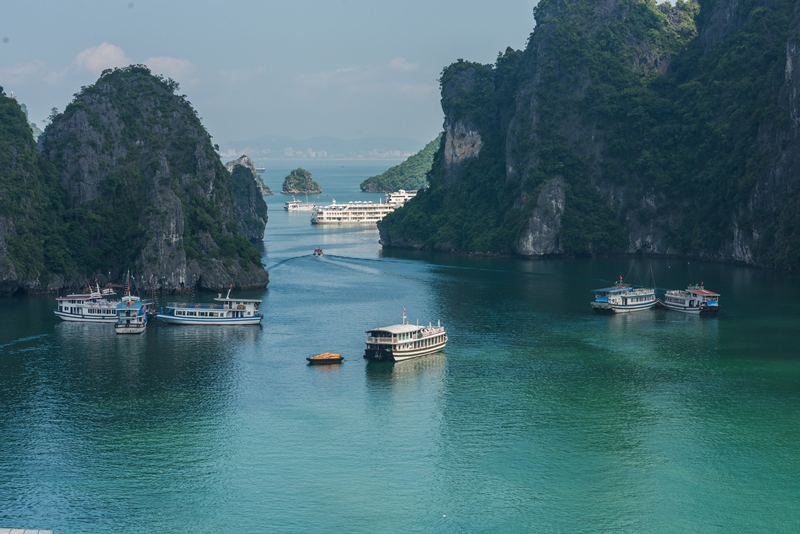
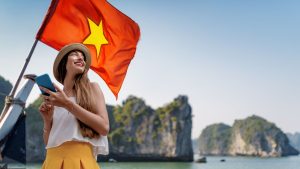
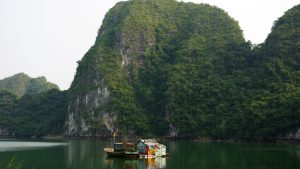
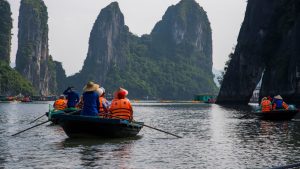
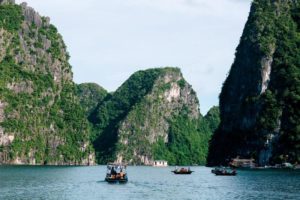
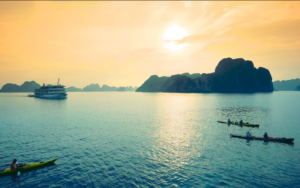
Pingback: Bringing Vietnam to You
Pingback: https://canadianpharmaceuticalsonline.home.blog/
Pingback: A Complete Guide to Halong Bay Cruises: Best Options and Tips - talkingvietnam.com